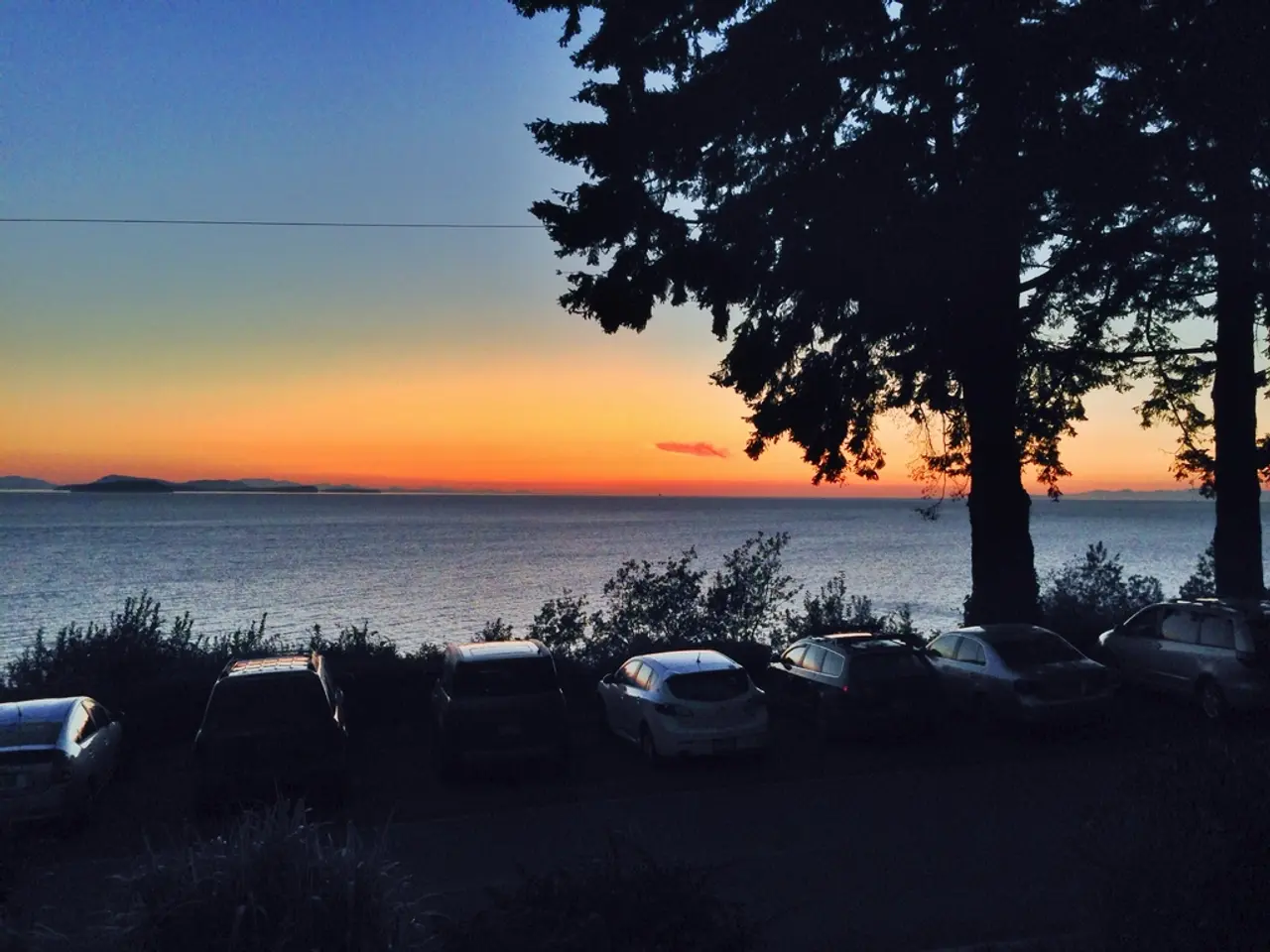Heatwave in Urban Area - Temperatures Reach 28 Degrees with a Tendency to Rise Further
The weather in Berlin and Brandenburg is set to be warm and sunny over the next few days, with temperatures ranging from 25 to 28 degrees Celsius. This summery weather, however, has triggered a warning about the potential growth of blue-green algae (cyanobacteria) in local water bodies.
Blue-green algae are photosynthetic microorganisms that reproduce primarily through asexual means such as binary fission, fragmentation, or spore formation. They can exist as unicellular or filamentous colonies, often with gas vesicles that help them float near the water surface where light is abundant.
Factors contributing to their growth and bloom formation include optimum environmental conditions, nutrient availability, water body characteristics, life cycle dynamics, and buoyancy mechanisms. Warm temperatures, plenty of sunlight, and calm water surfaces create ideal conditions for rapid cyanobacterial multiplication, leading to dense blooms that appear like green slime on water. Elevated levels of nutrients, especially nitrogen and phosphorus from agricultural runoff, wastewater, or other sources, promote cyanobacterial growth.
Some species of blue-green algae alternate between a dormant resting stage on or near the bottom and an active vegetative state near the surface, where they reproduce rapidly to form blooms. Cyanobacteria possess gas vesicles that allow them to adjust buoyancy and stay near the illuminated surface layers for photosynthesis.
While the water quality in the region is generally good, the Berlin Bathing Operations have seen a significant increase in visitors recently. On Monday afternoon, all other bathing spots in Berlin and Brandenburg displayed green, indicating good water quality, except for Lieper Bucht, Bammelecke, and Große Krampe due to blue-green algae.
The traffic light for the Columbiabad in Neukölln, the Sommerbad Staaken-West, the Kinderbad Monbijou, and the Sommerbad Wuhlheide showed yellow, indicating medium occupancy, according to the operator. Bathing is currently not recommended in Angermünde at the Wolletzsee and in Alt Zeschdorf at the Hohenjesarscher See (district of Märkisch-Oderland) due to the danger of a blue-green algae bloom in both bodies of water.
Blue-green algae multiply quickly in high temperatures, and on Tuesday, the sun will shine again, and it will be warmer than the previous day, with maximum temperatures of 28 to 31 degrees Celsius. The atmosphere in the public baths on Monday afternoon seemed relaxed, with the occupancy of most facilities relatively low, according to the website.
The total number of visitors for the entire previous week was around 79,000. Despite the warning, people are still flocking to the public baths, with over 34,000 people visiting the baths in Berlin on Saturday and approximately 15,000 on Sunday. A spokesperson for the Bathing Operations joked that Berliners need about three days to get into the swing of things.
The summery weather is expected to continue for the time being, and the German Weather Service has reported these conditions. It is expected to be particularly hot on Wednesday, with highs of 31 to 35 degrees Celsius. Overnight on Tuesday, temperatures will drop to 12 to 9 degrees Celsius.
Blue-green algae form blue-green, streak-like formations in the water and make it appear turbid. While the blooms can be visually unappealing, they can also produce toxins harmful to aquatic life and humans. It is essential to be cautious when swimming in local water bodies during this heatwave and always check the water quality before entering.
Weather-forecasting reports predict a warmer day on Tuesday, with temperatures ranging from 28 to 31 degrees Celsius, which could potentially accelerate the growth of blue-green algae (cyanobacteria) in local water bodies. Despite the warning, the number of people visiting public baths in Berlin has been increasing, reaching over 34,000 on Saturday and approximately 15,000 on Sunday.








